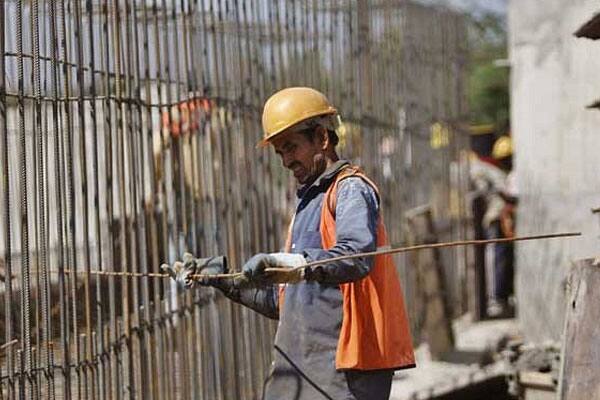Mumbai: Country's GDP is expected to grow by 7.9 percent next fiscal driven by rising domestic demand and higher capital spending by the government, even though global economy will remain anaemic, Goldman Sachs said Wednesday.
"India is already the fastest growing large economy and will remain so in FY 2016-17. We have positive views on the economy. The cyclical upturn will continue to be driven by the domestic demand," Goldman Sachs India chief economist Tushar Poddar told reporters here.
He said the investment demand will improve gradually, driven by greater government spending on infrastructure -- particularly railways and highways, lower interest rates, rising FDI inflows and ongoing improvements in ease of doing business, including some improvement in stalled projects.
"Moreover, the economic activity can be boosted by both monetary and fiscal policy being looser next year," he said.
The Wall Street major further said the economy should also reap the benefits of the 125 basis points reduction in interest rates by the Reserve Bank and the continued weakness in commodity prices.
"Higher productivity growth from improvements in technology, education and the ease of doing business (TEEs) can boost potential growth to 8 per cent from FY 2016-17 through FY 2019-20," Poddar said.
However, on the inflation side, he was not so sanguine, saying headline inflation will inch up to 5.3 per cent in FY 2016-17 as against the projected 4.9 per cent in FY 2015-16, driven by an uptick in both core and food inflation.
"We see upside risks to inflation. There is still a structural supply-demand imbalance in the food economy. Consumption growth rates remain much higher than production growth rates," Poddar added.
The inflation trajectory would be influenced by the effects of El Nino, which could add about 35 basis points to headline inflation and by a narrowing of the output gap.
"We see risks to our inflation forecasts skewed to the upside, both from higher food inflation, as well as the inflationary effects of the central government employees' wage hike and if GST were to be implemented in FY 2016-17," he added.
Poddar further said while the RBI has retained the option of cutting rates again, the bar for another rate cut is not very high and expects the RBI to remain on hold through 2016.
"If the US Fed is going to hike rates by 125 bps (between now and end of 2016), and inflation is going to surprise on upside, and you have a pay commission wage hike, and if you get GST which will also have an inflationary impact, then the room for monetary easing is really limited," Poddar said.
On the current account deficit, he said it will widen to 1.7 percent of GDP in FY17 from a projected 1.1 percent of GDP in 2015-16.
"Our expectation of a larger improvement in domestic demand compared to external demand is the main cause, leading to a somewhat wider trade deficit," he said.
However, he added that there is no room for a larger deterioration given the continuing fall in oil and metal prices.
Balance of payments in FY17 will be in surplus due to rising FDI inflows, as well as some improvement in portfolio flows from their current low levels with improving growth prospects, he said.
The brokerage expects rupee to depreciate gradually against the dollar, with its three, six and 12 months forecasts at 66.5, 67 and 67.5 respectively, driven by a stronger greenback.
But there are significant risks to its rupee forecast due to the potential for capital outflows after a Fed rate hike, as well as from any sharp yuan devaluation.
"Therefore, we see risks to our rupee forecasts as tilted towards further depreciation," he said.
He further said while the government has made progress in 'nuts and bolts' reforms such as ease of doing business, boosting FDI, infrastructure investment and financial inclusion, which has improved India's rankings in global indices, deeper structural reforms which involve legislative action have been difficult to achieve.
"For 2016, we think that the most likely reforms are GST, a new bankruptcy code, reforming power distribution and the formation of a monetary policy committee," he said, adding there will be only limited impact of GST on growth in the short-term.
















